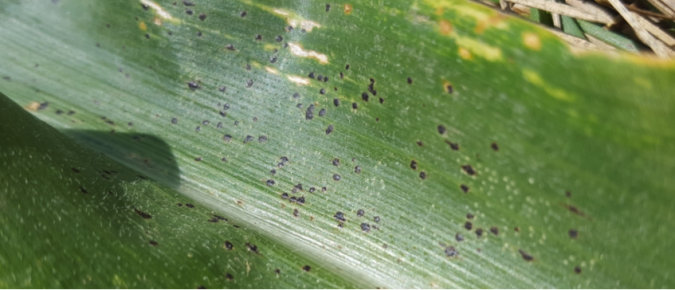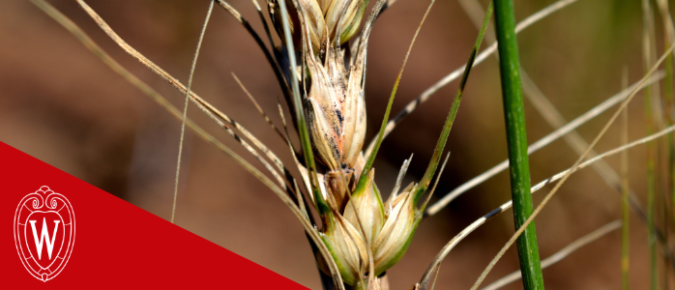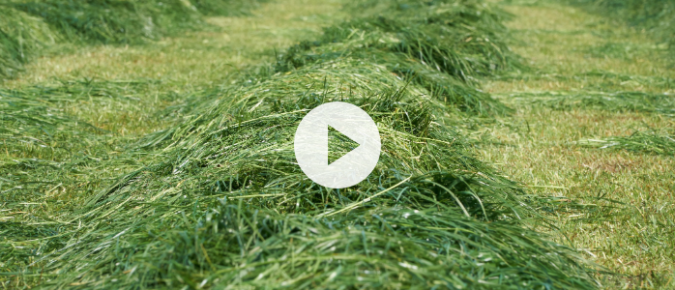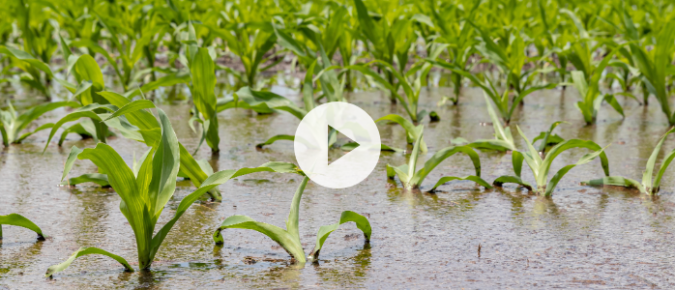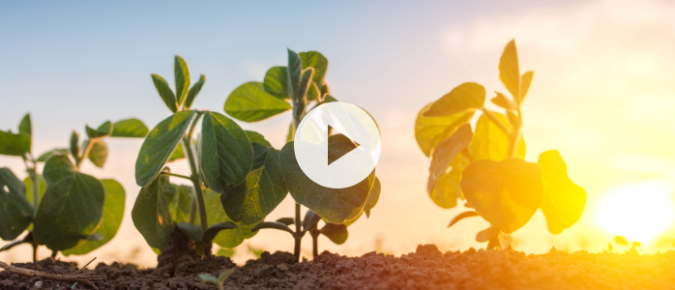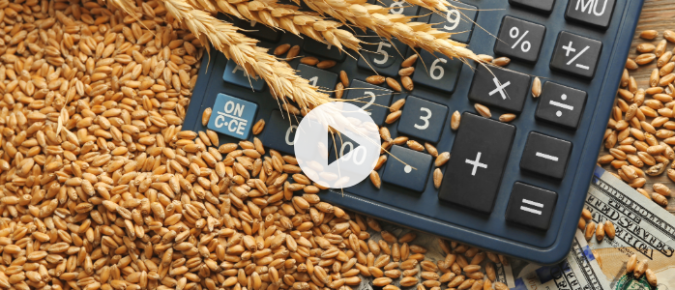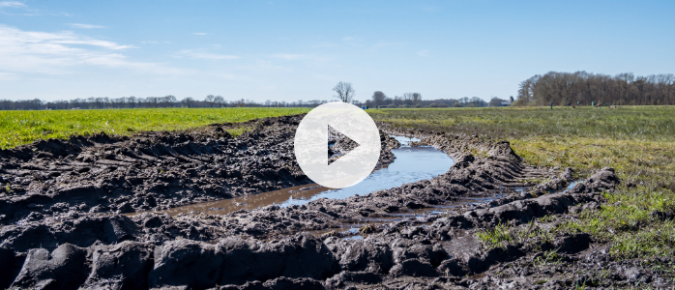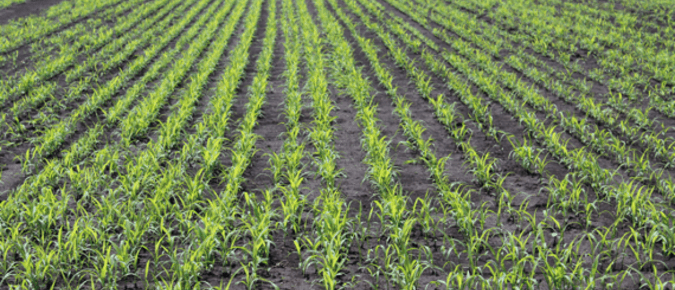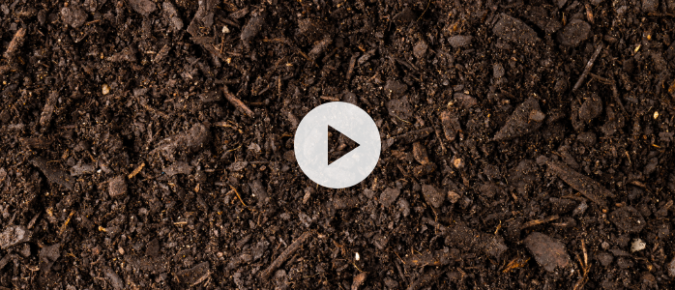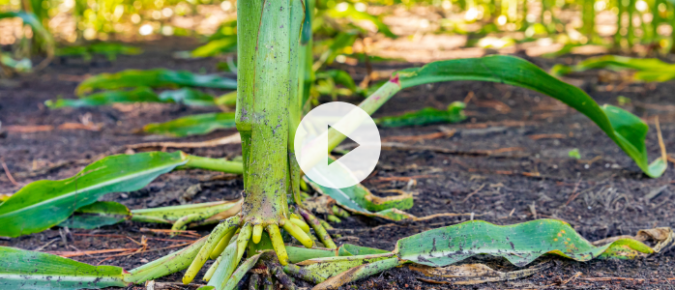Damon Smith, UW–Madison Extension field crops pathologist, and Michael Geissinger, outreach specialist with UW-Madison Extension Nutrient & Pest Management in Northwest Wisconsin, talk about the conditions this year, what that means for tar spot development, and management considerations for controlling it if it shows up in your field.
DON (deoxynivalenol or vomitoxin) is a mycotoxin produced by the fungus responsible for Fusarium Head Blight (FHB), a common and economically important disease in small grains. DON is a problem because it is toxic to humans and animals. Grain grown on-farm and fed to livestock should be managed properly to avoid negative effects.
The July 10 Badger Crop Connect webinar featured Jose Franco, a research agronomist with the U.S. Dairy Forage Research Center (USDA). Jose summarized current research efforts at the U.S. Dairy Forage Research Center on cover crops and continuous living cover. Ongoing research includes cover crop breeding efforts, work on alternatives to winter cereal rye following corn silage and some of the benefits of including flowering cover crops, and a whole systems approach to dairy forage systems evaluations.
The July 10 Badger Crop Connect webinar featured Dane Elmquist, a conservation cropping outreach specialist in the UW–Madison Division of Extension Agriculture Institute. Dane gave an overview of the Wisconsin Cover Crop Citizen Science network and highlighted project results. He also showcased the project’s interactive data dashboard and provided information on how to participate in the project for the 2024-2025 season.
The July 10 Badger Crop Connect webinar featured Steve Vavrus, the Wisconsin State Climatologist, giving a brief update about weather and climate conditions in Wisconsin July 10, 2024 and onward. Vavrus talks about the climatic impacts of the heavy rainfall Wisconsin has experienced lately, talks about relevant agronomic considerations, and gives outlooks for future precipitation and temperatures.
The June 26 Badger Crop Connect webinar featured Dr. Brenda Boetel, Professor and Department Chair of Agricultural Economics, and Extension Agricultural Marketing Specialist at UW–River Falls. The grain markets are off of their February 2024 lows; however, prices still remain lower than what farmers have experienced the previous few years.
Dr. Mitchell opens with a quick update on prevented planning options with crop insurance and where we are with crop progress and crop conditions based on USDA NASS data. He then examines various indicators about the current state of farm finances in this year of projected tight margins for corn and soybeans, such as land values, loan repayment rates, interest rates and inflation. Discussion focuses on financial steps farmers can take now as they prepare for fall. Dr. Mitchell closes with some updates on where Congress is with the Farm Bill and some of the changes being proposed for commodity support and crop insurance.
The June 26 Badger Crop Connect webinar featured Bridgette Mason, the Wisconsin Assistant State Climatologist. Bridgette walks through the effects of recent heavy precipitation, looks at the drought (or lack thereof) status across Wisconsin, and wraps up with an overview of weather patterns to come in late June and early July 2024.
Tools are available to help corn growers and dairy and livestock producers negotiate a fair price for corn silage.
From severe drought to flooded fields, Wisconsin’s forage producers are turning to forage species that can provide adaptability and flexibility in the midst of abnormal conditions. We jump in with Yoana Newman, UW-River Falls professor and Extension forage specialist, and Matt Oehmican, from Short Lane Ag Supply, to talk the details of warm season annual forages, from the decision-making process for growing these species to the unique technical agronomy management warm season annuals need to grow in Wisconsin.
The June 12 Badger Crop Connect webinar features Dr. Natasha Rayne, a new Extension faculty specialist in soil fertility. Dr. Rayne introduces us to her and her work and research in soil fertility.
The June 12 Badger Crop Connect webinar features Chris Clark, an outreach specialist in NE Wisconsin with the UW–Madison Extension Nutrient and Pest Management Program; Chris presents about pre-sidedress nitrate and plant tissue testing to help you capture a nutrient deficiency you don’t know about in your field this season.

